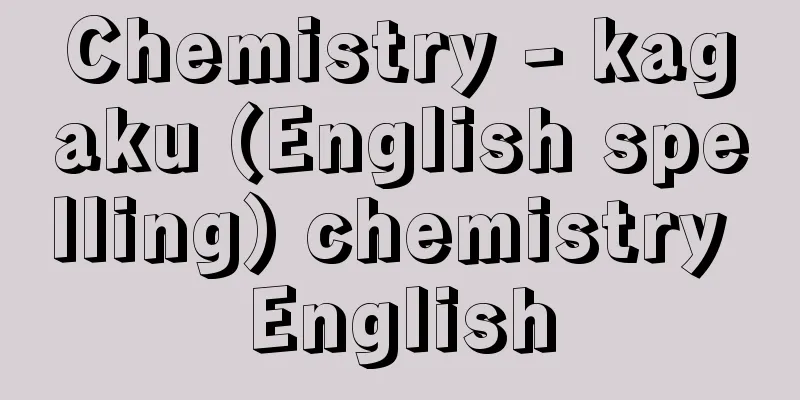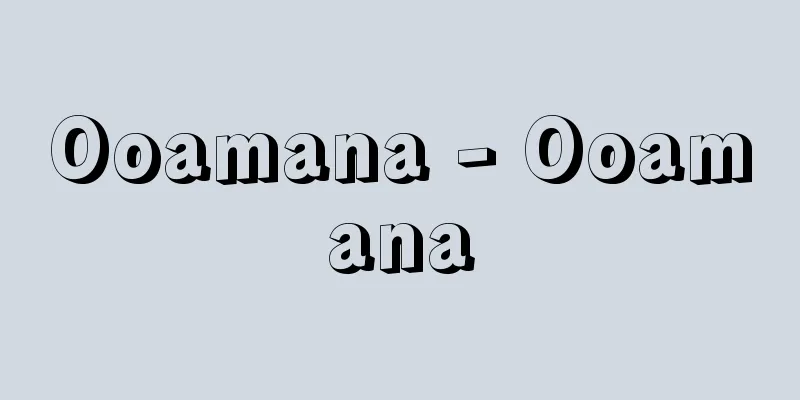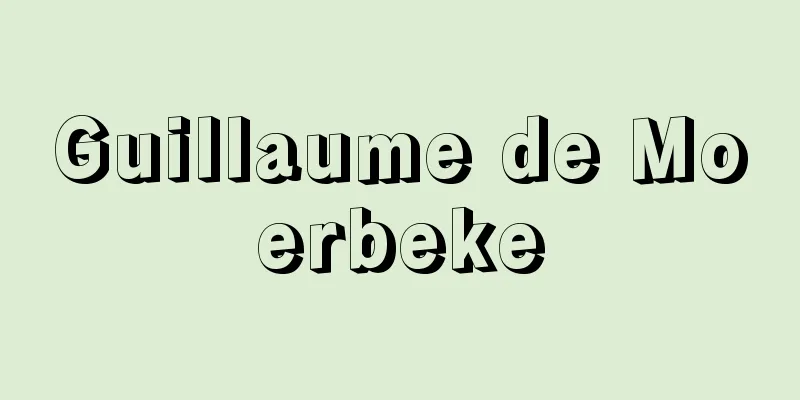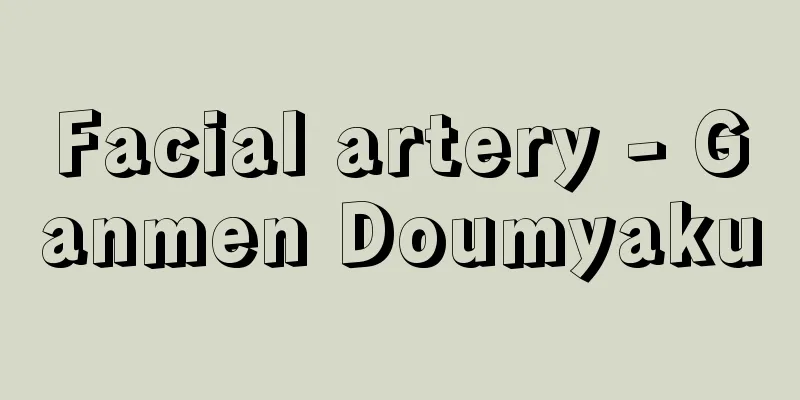Chemistry - kagaku (English spelling) chemistry English

OverviewA branch of the natural sciences related to matter, dealing in particular with the structure and properties of matter, as well as changes between substances, i.e. chemical reactions, and with the synthesis and analysis of substances. In addition to chemistry, the natural sciences related to matter also include physics, but whereas physics studies the motion, energy, thermal, electrical, optical, mechanical, and other attributes of objects, including not only pure substances but also mixtures, and seeks to construct a unified theory from these phenomena, chemistry seeks to advance the study of matter itself. Therefore, while physics often deals with physical properties and physical changes, chemistry primarily deals with chemical properties and chemical changes. [Nakahara Katsunori] Chemistry SubjectsChemistry deals with matter, that is, the essence that constitutes an object. For example, when a piece of iron is processed into wire, nails, knives, gun barrels, bridge beams, and various other iron products, the iron as a substance remains the same; it is merely a physical change in shape, and these are not the subject of chemistry. Similarly, when a tree is cut from a forest and used as lumber to make desks, furniture, and other wooden products, the shape of the tree changes, but the essence of the wood, that is, the fact that the cellulose molecules are solidified with lignin (composed of molecules in which atoms of carbon, hydrogen, oxygen, etc. are chemically bonded together), does not change at all. When marble or other stone is processed and shaped to be used as a building material or decorative item, the calcium carbonate, the main component of the marble, does not change. Such changes in shape or position are not the subject of chemistry. However, when iron products such as nails are left in the air, they can rust and fall apart. This is because the iron that constitutes the nails has been oxidized and turned into a substance called iron oxide. Also, when wood is burned in air, it burns up and disappears, leaving behind ash. This is because the cellulose and lignin, which are the essential elements of wood, react with oxygen, causing the atoms to rearrange, evaporating into carbon dioxide and water vapor, and the trace amounts of potassium salts contained in them remain as potassium carbonate and other substances. Similarly, when marble is placed in hydrochloric acid, it produces bubbles and dissolves. This is because the calcium carbonate, a component of the acid, decomposes, producing carbon dioxide bubbles, which then dissolves into calcium chloride. All such changes that alter the original composition of a substance are the subject of chemistry. [Nakahara Katsunori] At the interface between chemistry and physicsSince both chemistry and physics study matter in the natural world, the boundary between chemistry and physics is not so clearly defined in the natural sciences today. In the process of establishing themselves as modern sciences, these sciences each started from different positions, so the differences mentioned above were possible, and it has sometimes been argued that these differences are quite clear. Many physicists contributed to the research of the atoms of each element before we understood that the origin of matter is the atoms of each element, and that these atoms combine to form molecules through chemical bonds, or that they become ions by adding or releasing electrons to form ionic crystals. The kinetic theory of gas was developed, which posits that gas is a state in which molecules fly freely while colliding with each other, and this clarified the true nature of heat. The Avogadro constant, which is the basis of the mole, an important concept in chemistry, was initially determined by physical means such as Brownian motion and the measurement of unit charge. Until the middle of the 19th century, elements were established by chemical analysis by chemists, but since the end of the 19th century, almost all new elements have been discovered by physical means such as spectroscopic analysis and X-ray analysis. Currently, all artificial elements, such as the synthesis of transuranium elements, are created by nuclear reactions. The discovery of isotopes, the determination of atomic numbers, and the completion of the periodic table were all largely due to the contribution of quantum mechanics, which elucidated the atomic structure. Currently, physics has entered the field of chemistry in many areas, such as X-ray structural analysis, which is the most effective way to determine crystal and molecular structures. This does not mean that chemists are using physical methods, but that chemists are already conducting physical research. In addition, the position taken by physicists to unify the various properties of matter in an atomic manner is called condensed matter theory or condensed matter physics, and this is a broad area in modern physics, but it can be said that the areas that are currently attracting attention, including semiconductors and superconductors, are completely overlapping with chemistry. Thus, in modern science, the boundary between chemistry and physics does not clearly exist, and there are many overlapping commonalities, which are expanding further. However, of course, this does not mean that chemistry and physics are the same thing, and even though they are both dealing with nature, the difference is that physics is primarily concerned with the phenomenon, while chemistry is concerned with the substance itself. [Nakahara Katsunori] Various branches of chemistryChemistry can be divided into various fields according to the method of research or the substances that are the subject of study. In terms of the substances that are the subject of study, it can be broadly divided into inorganic chemistry, which deals with inorganic compounds, and organic chemistry, which deals with organic compounds. Recently, organometallic compounds, which can be said to be in the intermediate area between inorganic and organic compounds, have become widely used, and the field that deals with these compounds is sometimes called organometallic chemistry. The field that studies the properties, reactions, and structures of substances using various physical methods or theories is called physical chemistry. This field can be said to be the boundary area between physics and chemistry, and in the sense of physical chemistry, it can be said to be a field that has expanded from the field of chemistry to the field of physics, but in the opposite case, when it is considered to have expanded from the field of physics to the field of chemistry, it is called chemical physics, meaning chemical physics. In particular, chemistry of the substances that make up living organisms can be said to be the boundary area with biology, and is called biochemistry or biochemistry. However, from a medical standpoint, the main subject is the human body, and this is sometimes called medical chemistry. Analytical chemistry is the field that deals with the means and methods of analyzing substances, whether inorganic or organic. Depending on the purpose, analytical chemistry can be divided into qualitative analysis, which identifies the components, elements, or substances present in a sample, and quantitative analysis, which determines their amount. Depending on the means, analytical chemistry can be divided into physical analysis and chemical analysis, and depending on the target, analytical chemistry can be divided into inorganic analysis and organic analysis. On the other hand, in contrast to pure chemistry, applied chemistry is the field that studies the application of chemical technology to make things useful in production or life. Depending on the field of application, there are fields called industrial chemistry (sometimes divided into inorganic industrial chemistry and organic industrial chemistry), agricultural chemistry, medicinal chemistry, resource chemistry, etc. In contrast to the above-mentioned broad classifications, research has now become more specialized and differentiated, and various specialized names are used depending on the main subject, purpose, and standpoint of the research. For example, even in the field of inorganic chemistry, names such as geochemistry, astrochemistry, environmental chemistry, hot spring chemistry, mineral chemistry, radiochemistry, hot atom chemistry, nuclear chemistry, and coordination chemistry are used, while in organic chemistry, various names are used that classify the vast field of organic compounds (for example, aromatic ring chemistry, heterocyclic chemistry, natural product chemistry, medicinal chemistry, C1 chemistry, etc.), as well as many names such as polymer chemistry. In the field of physical chemistry, terms such as structural chemistry, quantum chemistry, catalytic chemistry, crystal chemistry, photochemistry, spectrochemistry, radiation chemistry, thermochemistry, interface chemistry, colloid chemistry, electrochemistry, magnetochemistry, chemical thermodynamics, physical chemistry, plasma chemistry, and others are used depending on the purpose, object, means, etc. However, the above are just the names of the main fields up to now, and recently, new fields have been opened up due to the discovery of new principles, the development of new research methods, and the increasing diversity of target substances, and new fields are being reorganized and new names are being created, such as green chemistry and microchemistry. The history of chemistry is a field that follows these developments in chemistry, examines their significance, and serves as a basis for consideration of the future. [Nakahara Katsunori] Chemistry ContentAs mentioned above, chemistry is a science that studies matter, so it first investigates the structure and properties of matter, and then studies the changes in those matters, i.e., chemical reactions. To advance this research, it synthesizes various compounds, including new substances, and analyzes them. [Nakahara Katsunori] A means to understand the structure of matterFirst, it is necessary to know the composition, that is, the contained components such as elemental elements, functional groups, and molecules. For this purpose, various analytical techniques are required, including qualitative analysis to know only the components, and quantitative analysis to know the amount of the components. In either qualitative or quantitative analysis, chemical analysis using chemical reactions such as precipitation reaction, neutralization reaction, color reaction, and oxidation-reduction reaction is commonly used, but chromatography using filter paper, ion exchange resin, starch, alumina, etc., and spot analysis are also often used. However, the so-called instrumental analysis using various physical methods is currently extremely widely used, and it is possible to know the presence of extremely small amounts by spectroscopic analysis of the emission and absorption of electromagnetic waves such as visible, ultraviolet, infrared, and X-rays, electrical analysis such as polarography and voltammetry, thermal analysis such as differential thermal analysis and thermogravimetry, and separation analysis such as mass spectrometry and gas chromatography. It is also important to identify various chemical species, including what kind of substance they are. [Nakahara Katsunori] Chemical Bond ResearchThe structure of matter, that is, the combination of atoms as the units that make up matter, and the forces that stabilize the bonds between atoms, are important subjects of research. This has a theoretical aspect of clarifying the nature of chemical bonds, and it has been revealed that electrons play an important role in bonding between atoms, which is why quantum mechanics is important. To know the arrangement of these atoms, structural analysis using X-ray structure analysis, electron beams, neutron beams, etc. is necessary, and further, spectroscopic means such as visible, ultraviolet, or infrared absorption spectroscopy, nuclear magnetic resonance (NMR) spectroscopy, X-ray spectroscopy, and other electromagnetic absorption and emission spectroscopy can be used to investigate the bonding state, molecular rotational motion, atomic vibration, electronic state, etc. Furthermore, the strength of these bonds can be measured not only by optical means but also by thermal means and other means. For these purposes, in most cases, advanced measuring equipment for the purpose of precise measurement, including various spectrophotometers, mass spectrometers, and automatic analyzers, is used. The study of chemical reactions, the rearrangement of bonds between atoms, is also important for the synthesis of new substances, but there is research into the treatment of chemical reactions themselves based on reaction kinetics and other theoretical approaches. [Nakahara Katsunori] A basic resource for researchersTo investigate the structure and properties of a substance, a pure substance is first required, and therefore chemists must be familiar with synthesis and purification methods. This has been accumulated since the 19th century, and the results are recorded in literature and various series. These are investigated, and known substances are synthesized or purified according to the results, and substances not described in these are recorded as new compounds. In this way, the number of compounds that have been recognized and recorded so far is thought to exceed 10 million, including inorganic compounds, organic compounds, and organometallic compounds, and the increase in new compounds in particular has been extremely remarkable and exponential in recent years. There are various series that collect and comprehensively list these compounds, but the most well-known are the Gmelins Handbuch der anorganischen Chemie (Gmelin's Handbook on Inorganic Chemistry) for inorganic compounds and the Beilsteins Handbuch der organischen Chemie (Beilstein's Handbook on Organic Chemistry) for organic compounds. The synthesized substances are examined for their melting point, boiling point, density, vapor pressure, heat of fusion, heat of sublimation, specific heat, critical pressure, critical temperature, dielectric constant, magnetic susceptibility, refractive index, solubility, absorption spectrum and other physical properties, as well as their reactivity to oxidizing and reducing agents, and their acidic and basic properties and other chemical properties with respect to various substances. These various physical properties and other information are compiled in various handbooks and catalogs, and magazines and search books specializing in physical properties are also published, but the most well-known at present is Landolt-Börnstein's Zahlenwerte und Funktionen aus Naturwissenschaften und Technik (Numerical Tables -- Natural Science and Engineering). In Japan, there is a simple book called Chemistry Handbook compiled by the Chemical Society of Japan. Research on chemistry such as the above has been published in many chemistry-related academic journals, and there are hundreds of such journals worldwide, with a huge number of papers. All of this research has been collected and compiled into a magazine that summarizes its contents. The oldest and most trusted journal was Chemisches Zentralblatt (Chemical Bulletin) published in Germany, but it has now been succeeded by Chemical Abstracts (Chemical Abstracts) published in the United States, which is the most trusted journal for researchers. In the former Soviet Union, Referativnyi Zhurnal, Khimiya (Reports Journal - Chemistry) was published. In Japan, there is the Japanese Chemistry Overview and the Science and Technology Literature Report. Academic societies have been established in countries around the world as gatherings of chemical researchers. In Japan, the largest academic society related to chemistry is the Chemical Society of Japan, which publishes journals and flash reports for researchers. There are also academic societies in various specialized fields, each of which publishes its own journals. Globally, there is the International Union of Pure and Applied Chemistry (IUPAC), which was established to promote cooperation among chemists around the world and discuss important issues related to chemistry on an international scale. [Nakahara Katsunori] Future Outlook for ChemistrySince chemistry was established as a modern science, it has pursued the essence of matter, and in the process, it has come into contact with physics, and the two have overlapped, and as mentioned above, this is currently expanding rapidly. However, what is now even more problematic is the relationship with biology. Living substances or their aggregates, or individuals, were not previously the subject of chemistry, but now protein molecules, identified as specific organic polymer compounds, are being viewed as chemical objects when they exhibit functions that are basic characteristics of the life of living organisms, such as substance assimilation and proliferation, under specific environments and conditions. Furthermore, the structures of DNA and RNA, which represent the roots of life, have been clarified, and the human genome has been deciphered, so it can be said that the future development of biochemistry (biochemistry) will be remarkable. In other words, biochemistry, which was an intermediate area between biology and chemistry, has now developed into a vast area even larger than physical chemistry and chemical physics, which are currently on the border between physics and chemistry. It seems that current biochemistry is more promising to develop as a chemistry than biophysics, which was approached from physics. Furthermore, the development of space exploration rockets will increase our knowledge of the chemistry of the universe, and will also advance the production of novel compounds, including superconducting materials. Furthermore, the synthesis of many useful organometallic compounds will progress, and this field will see remarkable development. [Nakahara Katsunori] History of ChemistryAncient chemical techniques and concepts of matterIt is believed that the first chemical phenomenon that humans learned to control was fermentation, or fire. Fire is a remarkable phenomenon that accompanies the chemical reaction of combustion, and because it acts as a heat source to promote chemical reactions, it is used not only for direct purposes such as heating, lighting, hunting, and slash-and-burn agriculture, but also as a tool for all kinds of chemical production, and has occupied an important position in human life since prehistoric times, drawing much attention. [Masao Uchida] Chemical Technology in the Ancient OrientThe technique of using fire to refine metals began in the ancient Orient more than 5,000 years ago. Bronze was used after copper, and iron, which is difficult to process in metallurgy, was used after that. Chemical technology was highly developed in the ancient civilizations of Egypt and Mesopotamia, and in addition to bronze, gold and silver work, pottery, glass, glazes, dyes, fragrances, detergents, medicines, and more were produced. It is clear that the artisans who produced these products recognized some regularity in the chemical reactions that occurred, but they were subordinate to the temples, which were also administrative offices, and their empirical knowledge of technology was mixed with the priests' mythological and magical worldview and passed down as the exclusive property of the temples. [Masao Uchida] The first natural scienceIt was the ancient Greek philosophers who first gave a theoretical interpretation to chemical changes and the diversity of matter. In the context of the polis society, which developed free commerce and industry, they left the mythological interpretation of the world and explained nature in terms of nature itself. This shows that the origins of chemistry as a science lie in ancient Greece. As the only fundamental substance that exists throughout diversely changing phenomena, Thales chose water, Anaximenes chose air, and Heraclitus chose fire. On the other hand, Empedocles considered the four elements of fire, air, water, and earth to be the fundamental substances, and explained the diversity of the world in terms of their combination and separation by the two forces of love and hate. Based on the development of these theories, Leucippus and especially Democritus proposed atomic theory. Atomism, which considers the fundamental substance of the world to be countless tiny and indivisible atoms moving through emptiness, explained the diversity and change of the world in terms of the shape, size, and movement of atoms. Democritus' atomic theory was a culmination of scientific thinking since Thales, but it was also at odds with empirical facts, such as its claim that even the soul is made up of rapidly moving, round atoms, and its materialistic nature led to it being rejected by conservative philosophers who defended the ruling order of the Athenian aristocracy. [Masao Uchida] Aristotle's Four ElementsAristotle rejected the idea of atoms and emptiness, and adopted the idea of the four elements, but at the same time inherited Plato's idealism, separating qualities from matter, calling qualities form and matter matter. His theory of the four elements states that the first matter, a potential state without qualities, is imprinted with two of the four qualities of heat, cold, dryness, and moisture, and the four elements, fire (hot and dry), air (hot and moist), water (cold and moist), and earth (cold and dry), are formed as actual states, and these combinations cleverly explain the change and diversity of matter. According to this theory, elements can be transformed by exchanging the forms endowed to matter, which later became the theoretical basis for alchemy. This theory of the four elements dominated chemical theory for about 2,000 years, backed by Aristotle's academic authority. The two major trends in the view of matter that emerged in ancient Greece, atomism and the theory of the four elements, continued to appear in various forms afterwards. [Masao Uchida] The Origin and Development of AlchemyAlchemy of AlexandriaAfter the Hellenistic period, the center of science shifted to Alexandria, where Greek and Egyptian cultures met and alchemy was born. Egypt had the technology to manufacture chemical substances since ancient times. The so-called "Stockholm Papyrus" and "Leiden Papyrus," discovered in the 19th century, are manuscripts from the end of the 3rd century, which contain many recipes for dyeing, artificial gemstones, and imitation of gold and silver through alloys and coloring, giving a glimpse of the techniques passed down by artisans. Alchemy was born from the fusion of the gold imitation techniques in this purely technical collection of recipes with Aristotle's view of matter and theory of elemental transformation. In other words, the basis of alchemy was to extract the form of gold and silver through technical operations such as heating, sublimation, and distillation, and then to impart this to base metals such as copper, iron, and lead to obtain precious metals. Alchemy was always accompanied by mysticism and was complicated by the mixture of astrological cosmology and religious elements, but the practical techniques were extremely rational. The writings of Pseudo-Democritus from around the 1st century and Zosimos from the late 3rd century indicate that glass and ceramic distillers, furnaces, water baths, filters, and other devices were invented at the time, and that the processing of metals and the production of reagents for this purpose had developed. [Masao Uchida] Arabian AlchemyAlexandrian alchemy was passed on to the Islamic world via Syria and Persia, and developed in both technical and theoretical aspects against the backdrop of the economic prosperity of Arabian society. The collected works attributed to Jabir bin Hayyan (10th century) and the writings of Razi and Ibn Sina are clear and practical. They improved the distillation and sublimation methods, described the production methods of nitric acid, caustic alkali, and filtrate (ammonium chloride), and systematically classified many chemical substances. Aristotle's theory was modified in various ways, and it was said that the raw materials that directly constitute metals are "mercury" and "sulfur," and that the ratio can be perfected using "elixir" (philosopher's stone). [Masao Uchida] Spread to EuropeThe chemical results of Arabic alchemy were introduced to Europe after the 12th century, and alcohol, nitric acid, aqua regia, sulfuric acid, gunpowder, etc. became known. Geber's Summa perfectionis magisterii (The Secret Book of the Enchantment of Metals), written in Spain in the early 14th century, is a typical example of a practical alchemy book from Medieval Europe. Although the procedure for making gold is vague, it accurately describes the refining and assaying methods of metals, such as cupellation, the manufacturing methods of chemical substances, and chemical equipment. From the end of the Middle Ages onwards, the number of alchemy books leaning towards mysticism and symbolism and fraudulent alchemists increased, which led to social criticism, but laboratory alchemy gradually enriched the natural history knowledge of chemical substances. In China, books such as Wei Boyang's Zhouyi San Tongji (c. 142) and Ge Hong's Baopuzi (c. 317) appeared at roughly the same time as Alexandria. Chinese alchemy (alchemy of elixir) placed emphasis on creating elixirs of immortality in connection with the idea of immortality, but the level of chemical technology was also high, as seen in the invention of paper (2nd century) and black powder (7th century). Looking at the later work Tenko Kaibutsu (The Creations of Heaven) (1637) by Song Yingxing, we can see that the production of chemical substances gradually expanded. However, even in this book, theoretical considerations were limited to the theory of Yin-Yang and the Five Elements, and did not develop into modern chemistry. Alchemy had both the development of new experimental knowledge and the continual repetition of old mystical traditions, but the development of modern mining and other industries promoted the former and exacerbated the contradictions with the latter. [Masao Uchida] The Establishment of Modern ChemistryDevelopments in MetallurgyAs commerce and industry in Europe flourished in the 16th and 17th centuries, the demand for metals and other chemical products increased, and many practical works by engineers in metallurgy, pharmaceuticals, and other fields began to be published. These techniques were systematically and in detail described in works on herbal distillation by Hieronimus Brunschwygk (1450?-1513) and on metallurgy and assaying by Billingthio, Agricola, and Lazarus Ercker (1530?-1594). Assays were performed quantitatively using a balance, and new metals such as zinc, cobalt, and bismuth and their compounds were described. Chemical engineer J. R. Glauber manufactured and sold inorganic acids and salts such as concentrated sulfuric acid and hydrochloric acid, and accurately understood the composition of salts and double decomposition reactions. [Masao Uchida] Medicinal ChemistryWith these chemical techniques and abundant knowledge as a background, the "medical chemistry school" emerged. Its representative, Paracelsus, transformed alchemy, which was aimed at making gold, into medicine, soap, iron production, and even bread making. He considered the life process to be a chemical phenomenon and proposed the use of inorganic compounds such as mercury and arsenic as medicine. He also added "salt" to the alchemist's "mercury-sulfur" theory and advocated the three elements theory. On the other hand, Van Helmont grew willow seedlings in water only for five years and measured their weight increase, and concluded that the origin of all things is "water". Otto Tachenius (1620?-1690?) explained all chemical reactions by the neutralization of acids and alkalis and advocated the acid-alkali theory. They tried to understand chemical changes rationally, but their theories were still combined with mysticism and could not be effective for medical treatment. However, the knowledge of chemical substances they left behind was passed down to subsequent textbooks for pharmacists. Before the 19th century, chemical knowledge was mainly provided by those trained as physicians or pharmacists. Andreas Libavius (1560-1616) wrote Alchemia (1597), the first chemistry textbook to compile in one volume the methods of decomposing and synthesizing substances. [Masao Uchida] Towards chemistry as a scienceFollowing the deepening of awareness of chemicals and the success of Galilei and others in modern mechanics, British R. Boyle strived to establish chemistry as an independent science. Based on the theory of atom (particle theory) revived by Gassandy and Descartes, in his main work, Sceptic Chemist (1661), he rejected the theory of four elements and three primitives, and argued that chemical theory be based on concrete substances captured through experiments. He took the first step in dealing with the mechanisms of chemical change scientifically, such as systematizing methods of identification based on chemical properties of matter to create the basis of qualitative analysis, or studying the role of air in combustion. However, he relied on mechanical particle theory, and was unable to fully explain chemical change. になったんです。 English: The first thing you can do is to find the best one to do. になったんです。 English: The first thing you can do is to find the best one to do. [Uchida Masao] The birth of modern chemistryになったんです。 English : The first thing you can do is to find the best one to do. In 1789, Annales de Chimie , an academic journal specializing in chemistry, was first published. After the second half of the 18th century, with the progress of the British Industrial Revolution, sulfuric acid, which was necessary to finish cotton products, began to be mass-produced using the lead chamber method, and soda was also produced using the Leblanc method, and the invented powder. Thus, the acid alkaline industry was born as a modern chemical industry, and such technological developments supported the establishment of modern chemistry. [Uchida Masao] 19th century chemistryAtomistic ChemistryShortly after the 19th century, Dalton introduced the concept of chemical atoms as entities corresponding to the chemical elements of Laboisier. It was said that atoms of various elements differ in their relative weight (atomic weight). His atom theory explained the law of constant proportion and predicted the law of multiple proportion. After Dalton, debates continued throughout the 19th century regarding the existence of atoms, but in any case, chemistry developed around the theory of atom, revealing the composition of atoms within a compound, and determining the atomic weight accurately became the theoretical task. Dalton's atomic weight was determined based on arbitrary molecular formulas, but in 1811 Avogadro proposed a famous hypothesis (Avogadro's Law) and presented a method for deriving atomic weight from molecular weight. However, it could only be applied to a small number of gas molecules and was not widely approved by academic circles. Meanwhile, Volta invented batteries, and the discovery of electrolysis phenomena continued to advance research into electrochemistry. Berzelius proposed an electrochemical dualism of compound composition, and this theory was widely accepted, showing that inorganic salts are composed of electrical bonds between positive and negative two components. Furthermore, based on this dualism, he adopted Mitchelllich's crystal homomorphism and Duron-Petit's law to determine precise atomic mass. However, many chemists considered the existence of atoms that were not sensibly proven as a hypothesis, and used equivalents that were determined manipulatively rather than atomic mass. [Uchida Masao] The evolution of organic chemistryDualism lost its effectiveness as organic chemistry developed after the 1830s. To explain the diversity of organic compounds and the complexity of reactions that are found one after another, Liebig, J.B. Dumas, A. Laurent, Geralto (Gerard), and A. Williamson proposed various structural theories. Some of these included important ideas, such as the idea of groups and the idea of cognate sequences, but they were not sufficient to understand their structure and essence, and finally formed the theory of organic molecules in Frankland's valence concept, Kecle and A.S. Cooper's theory of tetravalentness and chaining of carbon atoms (1858). The establishment of the concept of chemical structure also helped to resolve the confusion surrounding atomic weights. Avogadro's hypothesis was widely approved, and the distinction between equivalent weights and atomic weights became clear, and the united position was made at C = 12 and O = 16 (1860). After that, Kekure unraveled the ring structure of benzene, Phant Hoff and Le Bell proposed a tetrahedral structure of carbon atoms to open up stereochemistry, and A. Werner extended this to inorganic compounds to create a coordination theory. The precise determination of atomic mass led to the discovery of periodic rules (1869) by Mendeleev and J.L. Meyer. In the 19th century, new analytical methods developed, including electrolysis and spectroscopic analysis, and although the number of known elements exceeded 60 in the 1860s, a natural order was found between them. Three elements predicted by the periodic rules were discovered, and the progress of the separation of rare earths and the discovery of inert gases made the periodic rules even more complete. [Uchida Masao] The birth of physical chemistryMeanwhile, Hess's Law (1840), which began with Laboisier and Laplace, made the study of affinity quantitative. The principles of thermochemistry of H.P.J. Thomsen and Bertolo in the late 19th century were an extension of this, and heat of reaction was considered a measure of affinity. In addition, individual studies on reaction rates and chemical equilibrium were generalized to Gurber and Borge's Law of Mass Action (1864). The theory of thermodynamics that had developed in physics began to be applied to these studies, and after Holstmann's thermodynamic interpretation of dissociative equilibrium, elucidating the equilibrium conditions of Gibbs' heterogeneous systems, and Helmholtz's concept of free energy, chemical thermodynamics was established by Fant Hoff. になったんです。 English: The first thing you can do is to find the best one to do. Furthermore, in place of the LeBlanc method, the ammonia soda method (Sorbet method) was created using continuous equipment, and along with the electrolytic soda industry, it became the starting point for modern chemical technology. During the 19th century, the chemical industry began to seek specialized chemists, and university courses and chemical society were established in various countries. [Uchida Masao] Chemistry of the 20th centuryThe formation of atomic physicsAt the turn of the century, the so-called "physics revolution" occurred, including the discovery of X-rays, confirmation of the existence of electrons, the discovery of radium, and the discovery of radioactive decay of atoms, and conventional atomic images were fundamentally overturned. It became clear that atoms consisted of even smaller particles, and J. J. Thomson, Nagaoka Hantaro, E. Rutherford, and others proposed various atomic structure theories. In the development of atomic physics, Sodi pointed out the existence of isotopes, and H. G. Moseley revealed the physical meaning of atomic numbers. Based on these studies, N. H. D. Bohr incorporated Planck's quantum hypothesis to elucidate the basic structure of atoms, and further clarified the relationship between atomic structure and periodic rules. [Uchida Masao] Chemical Bonding TheoryChemical theory in the 20th century develops the foundational stone on the elucidation of atomic structures. The essence of chemical affinity and valence was explained by G.N. Lewis, W. Cossel, and Langmuir by the stability of the out-of-shell electrons and the electron pair bonds between atoms, and the idea was extended to coordinate bonds by Sidgwick. Bohr's theory is mathematically refined as a new quantum mechanic by Heisenberg, Schrodinger, and others, but Heitler and F.W. London successfully applied quantum mechanics to hydrogen molecules, while Pauling introduced the concept of quantum mechanical resonance into the electronic state of chemical bonds, establishing the so-called resonance theory. Meanwhile, R. Robinson and Ingold applied these new chemical bond theories to systematize empirical facts in organic reactions, creating organic electronic theory. The quantum mechanical treatment of chemical bonds was further developed into Hunt Friedrich Hund (1896-1997) and Maliken's molecular orbital method and the theory of ligand fields, and organic electronic theory was also incorporated into these results and modified and expanded, leading to its effectiveness as a guiding principle of organic synthesis. [Uchida Masao] Chemical Reaction TheoryIn chemical reaction theory, many reaction intermediates, including free radicals, have been experimentally confirmed after the study of the photochemical reaction between hydrogen and bromine, and many other reaction intermediates have been experimentally confirmed, resulting in the elucidation of the reaction mechanism, but the unification with quantum mechanics has not yet been completed. Solution theory has included Debye and Hückel's theory of strong electrolyte solutions, and Brönsted and G.N. Lewis's concept of acid and bases, and polymer solution theory and rheology have also been developed. The elucidation of the atomic structure also led to the establishment of radiochemistry. Research into nuclear transduction, artificial radioactivity, nuclear fission and its energy by particle accelerators has progressed, and a variety of transuranium elements were produced. On the other hand, atomic bombs were manufactured during World War II. [Uchida Masao] BiochemistryBiochemical research focusing on natural products such as carbohydrates and proteins, nutrition, and fermentation, began in the 19th century, but the structure theory of organic compounds was the basis for research into sugars and polypeptides by E.H. Fisher, and the chemical structure of biological substances became extensive, and biochemistry became a major position. Since 1930, the extraction, structure determination and synthesis of vitamins, hormones, alkaloids, etc. have progressed, and the mechanisms of metabolism, photosynthesis, and genetics have also been clarified. In addition to these, there have also been progress in electrochemistry, photochemistry, complex chemistry, and new fields such as geochemistry and asthmatology are being developed. [Uchida Masao] New research methodsThe development of the above-mentioned areas is owed to the use of many optical and electromagnetic experimental means, including instrumental analysis, along with mathematical handling, such as quantum mechanics. In the 1910s and 1950s, analytical methods such as glass electrode potentiometric devices (pH meter), polarography, X-ray and electron diffraction, mass spectroscopy, visible, infrared and ultraviolet spectroscopy, electron spin resonance and nuclear magnetic resonance, isotope tracers, paper chromatography and gas chromatography, were developed, and in recent years, they have been able to be combined with computers and have been effective. [Uchida Masao] Development of the chemical industryになったんです。 English: The first thing you can do is to find the best one to do. In addition to these synthetic polymer materials, a wide variety of chemical products are used in modern everyday life, including synthetic medicines, pesticides, synthetic dyes, special alloys, ceramics, and semiconductors. From the end of the 20th century to the beginning of the 21st century, new materials and fields have been attracting attention, such as nanoscience and biopolymer chemistry, new materials that apply these materials and biochemical industries. [Uchida Masao] Chemistry and modern societyChemistry and chemical technology have enriched people's perceptions of nature and real life, but at the same time, they have pose great challenges for modern society as the source of use in war and environmental destruction. We must also face the development of chemistry and its industrial use in the midst of social contradictions where war is at its peak. In addition, inhumane weapons such as atomic and hydrogen bombs and biological and chemical weapons, as well as a huge amount of resources and human resources have been wasted. In addition, since R. Carson issued a warning against the abuse of pesticides in 1962 by his book Silent Spring, society has started to focus on water and air pollution caused by chemicals and the expense of natural resources. From around the late 1980s, it has become clear that environmental issues, such as global warming, ozone depletion, acid rain, and residual organic pollutants, are spreading on a global scale. Chemistry and chemical technology are heavily involved in the causes of these environmental problems, but it is also highly dependent on the power of chemistry to investigate the circulation of substances in the environment, mechanisms of action of toxins, and to create solutions to problems and change social consciousness. It can be said that modern chemists are required to further pursue the mechanisms of change in the material world, and to always question the social responsibility of their work. [Uchida Masao] "Chemus Chemistry: The Science of Experiment" compiled by Chemus Committee, translated by Okuno Hisaki et al., two volumes (1965, Kyoritsu Publishing)" ▽ "A. Aid, translated by Kamatani Yoshinori et al., 3 volumes (1972-1977, Misuzu Shobo)" ▽ "L. Pauling, General Chemistry, translated by Sekishuzo, Chihara Hideaki, and Kiriyama Ryoichi (1974, Iwanami Shoten)" ▽ "Tanaka Minoru, The Birth, Expulsion, and Resurrection of Atom Theory" (1977, Shinnihon Publishing)" ▽ "Imoto Minoru, Onuma Masanori, Michiei Tatsumasa, and Nakagawa Naoya, Recommendations of Chemistry, 2nd Edition (1980, Chikuma Shobo)" ▽ "H. M. Lester, Supervised Translation of Onuma Masanori, The History of Chemistry and Humanity" (1981, Asakura Shoten)" ▽ "Okazaki Renji et al., Iwanami Lectures Edited by Imoto Minoru, Onuma Masanori, Supervised Translation of Onuma Masanori (1981, Asakura Shoten)" ▽ "Iwanami Lectures Edited by Okazaki Renji et al., 2nd Edition (1980, Chikuma Shobo)" ▽ "H. M. Lester, Supervised Translation of Onuma Masanori, The History of Chemistry and Humanity" (1981, Asakura Shoten)" ▽ "Okazaki Renji et al., "Iwanami Lectures Edited by Imoto Minoru, Onuma Masanori, Supervised Translation of Onuma Masanori (1 Introduction to Contemporary Chemistry, 18 volumes (2000-2011, Iwanami Shoten) ▽ W. H. Block, translated by Ohno Makoto, Umeda Jun, and Kikuchi Yoshiyuki, 2 volumes (2003-2006, Asakura Shoten) ▽ Edited by Chemical Society of Japan, "That's what chemistry is! --The world of molecules that expands dreams" (2003, Chemical Doujin) ▽ "Chemical Handbook: Applied Chemistry Edition" 2 volumes, revised 6th edition (2003, Maruzen) ▽ "Chemical Handbook: Basics Edition" 2 volumes, revised 5th edition (2004, Maruzen) ▽ [Reference Item] | | | | |Source: Shogakukan Encyclopedia Nipponica About Encyclopedia Nipponica Information | Legend |
概説物質に関する自然科学の一部門で、とくに物質の構造および性質、さらには物質相互間の変化すなわち化学反応を取り扱い、物質の合成、分析を行う学問。物質に関する自然科学には化学のほかに物理学もあるが、物理学が、純粋物質のみならず混合物なども含めた物体についての運動、エネルギーや、熱的、電気的、光学的、機械的などの属性を研究し、それらの現象から統一的な理論を構築しようとする立場をとるのに対し、化学では物質そのものについての研究を進めようとする立場をとっている。したがって物理学が多くの場合、物理的性質、物理変化を取り扱うのに対し、化学では主として化学的性質、化学変化を取り扱うことになる。 [中原勝儼] 化学の対象物質すなわち物体を構成している本質を取り扱うのであるから、たとえば鉄片を加工して針金や釘(くぎ)、小刀、銃身、橋桁(はしげた)その他各種の鉄製品としても、物質としての鉄は変わらず、形が変わっただけの物理変化であるから、これらは化学の対象ではない。また森林から木を切り出して材木とし、それで机や家具その他の木製品をつくったとしても、それも木の形が変わっただけで木の本質、すなわちセルロースの分子がリグニン(炭素、水素、酸素などの原子が化学結合によって結び付いた分子からなる)で固められていることはまったく変わっていない。大理石などの石材を加工して形を整え、建設材料や装飾品などに使用しても、大理石を構成している主成分の炭酸カルシウムは変わっていない。このように形が変わったり、位置が変わったりするような変化は化学では取り扱う対象ではない。しかし、釘などの鉄製品を空気中に放置したとき銹(さ)びてぼろぼろになってしまうことがあるが、これは、釘などを構成している鉄という物質が、酸化されて酸化鉄という物質に変化したのである。また木を空気中で燃焼させると、燃えてなくなってしまい、灰を残すが、これは、木の本質であるセルロースやリグニンが、酸素と反応することによって原子の組み替えがおこり、二酸化炭素や水蒸気となって気化し、微量含まれているカリウム塩などが炭酸カリウムその他となって残るのである。また、大理石を塩酸の中に入れると泡を発生して溶けてしまうが、これは、成分の炭酸カルシウムが分解して二酸化炭素の泡を発生し、塩化カルシウムを生成して溶けてしまうのである。このような物質本来の構成の変わるような変化は、すべて化学の対象である。 [中原勝儼] 化学と物理学の境界化学も物理学も、自然界における物質について研究しているのであるから、現在の自然科学のなかで、化学と物理学の境界がそれほど明確に区別されているわけではない。これらの科学はいずれも近代科学として成立していく過程で、その出発の立場が異なっていたため、先にあげたような違いが考えられ、その違いがかなり明確であると主張されたこともある、というだけなのである。 物質の根源が各元素の原子によるものであり、それらの原子が化学結合によって集まって分子をつくり、あるいは電子の付加や放出によってイオンとなって集まりイオン結晶をつくることがわかるまでには、多くの物理学者たちの研究の寄与があったし、また分子が互いに衝突しながら自由に飛び回っている状態が気体であるとして気体運動論が展開され、これによって熱の本性が明らかにされたのである。化学にとって重要な概念のモルの基本となるアボガドロ定数も、始めはブラウン運動や、単位電荷の測定など物理的手段によって決められたのであるし、19世紀なかばごろまでは、元素は化学者たちの化学分析によって確立されたのであるが、19世紀終わりごろからは、ほとんどすべての新元素の発見は、分光分析やX線分析などの物理的手段によってなされたものである。また現在、超ウラン元素の合成など人工元素はすべて核反応によってつくりだされているのである。同位体が発見され、原子番号が確定して周期表が完成したのも、原子構造を解明した量子力学による寄与が大きく、現在、結晶構造、分子構造を決定するのにもっとも力のあるX線構造解析など、きわめて多くの分野で、物理学は化学の分野に入り込んでいる。これは、なにも物理学的な手段を化学者が用いているというだけではなく、化学者がすでに物理学的な研究を行っているのである。また物理学者たちが物質の各種の性質を原子論的に統一解釈しようとする立場を、物性論あるいは物性物理学などといっており、現代の物理学における一つの広い領域になっているが、半導体、超電導体などを含めて、現在注目されている分野などは、まったく化学と重なり合った領域であるといえる。 このように現在の科学では、化学と物理学の境界が明確に存在するなどということはなく、重なり合って共通となっている部分が広くあり、しかもそれはさらに拡大されていっているといえよう。しかしもちろん化学と物理学が同じものだなどということではなく、同じ自然に対しても物理学がその現象を主としてとらえようとする立場であるのに対し、化学が物質そのものをとらえようとする立場にたっている違いがあるのだといえよう。 [中原勝儼] 化学の諸分科化学は、研究を進める方法、あるいは対象とする物質などの違いによって各種の部門に分類できる。対象とする物質の違いでは、まず、無機化合物を取り扱う無機化学と有機化合物を取り扱う有機化学とに大別される。最近では無機化合物と有機化合物との中間領域にあるともいえる有機金属化合物が広く取り扱われるようになり、これらを取り扱う分野を有機金属化学ということもある。また各種の物理的な手法あるいは理論などによって、物質の性質、反応、構造などについて研究を進める分野を物理化学といっている。これは物理学と化学の境界領域ともいうべき分野であり、物理的な化学という意味で、化学から物理学の分野に広がっていった領域といえるが、これはまた逆に物理学から化学の領域に広がってきたと考えるような場合には、化学的な物理学という意味で化学物理学といっている。また、とくに生体を構成している物質についての化学は、生物学との境界領域ともいうべきもので、生物化学あるいは生化学という。ただ医学的な立場からは人体をおもな対象とし、これを医化学ということもある。 無機化合物、有機化合物を問わず、それらの物質を分析する手段、方法などに関する分野が分析化学である。分析化学には、その目的によって、試料中に存在する成分、元素あるいは物質を同定する定性分析、およびその量を決定する定量分析とがあり、手段によって物理分析と化学分析、対象によって無機分析と有機分析とに分けることがある。 一方、純正化学に対して、生産または生活に役だたせるために化学技術を応用して研究する分野を応用化学といっている。応用化学には、その対象とする分野によって、工業化学(無機工業化学と有機工業化学のように分けていうこともある)、農芸化学、薬化学、資源化学などというようによばれている分野がある。 以上のような大きな分類に対して、現在では研究の各種専門化あるいは分化が進み、その主たる対象や目的、取り上げる立場に応じて、専門の各種名称が用いられている。たとえば無機化学の分野でも、地球化学、宇宙化学、環境化学、温泉化学、鉱物化学、放射化学、ホットアトム化学、核化学、錯体化学などの名称が使われており、有機化学では広大な有機化合物の領域でそれらの分類をとった各種の名称(たとえば、芳香環化学、複素環化学、天然物化学、医薬化学、C1化学など)や、あるいは高分子化学などという多くの名称が使われている。 物理化学の分野でも、その目的、対象、手段などによって、構造化学、量子化学、触媒化学、結晶化学、光化学、分光化学、放射線化学、熱化学、界面化学、コロイド化学、電気化学、磁気化学、化学熱力学、物性化学、プラズマ化学その他の名称が使われている。 ただし以上の分野もこれまでのおもな分野の名称であって、最近では新しい原理の発見、新しい研究手段の開発、対象物質の多様性の増大などによって新しい分野が開かれ、また再編成されて、新しい名称の分野も生まれつつある。たとえばグリーンケミストリー、マイクロ化学などである。 またこれらの化学の発展のあとをたどり、その意義を検討し、将来への考察のもととする分野が化学史学である。 [中原勝儼] 化学の内容すでに述べたように、化学は物質を対象とする学問であるから、まず物質の構造、性質を追究し、さらにそれらの物質の変化すなわち化学反応を研究する。そしてそれらの研究を推進するため、新しい物質を含めて各種の化合物を合成し、それを分析するものである。 [中原勝儼] 物質の構造を知るための手段まずその組成、すなわち成分元素あるいは官能基、分子などの含有成分を知る必要がある。このためには各種の分析技術が必要であり、成分のみを知るための定性分析、あるいはその含有量を知るための定量分析がある。定性、定量いずれにしても、沈殿反応、中和反応、呈色反応、酸化還元反応などの化学反応を利用した化学分析が普通に用いられるが、濾紙(ろし)やイオン交換樹脂、デンプン、アルミナなどを用いるクロマトグラフィーや、斑点(はんてん)分析なども多く用いられる。しかし現在きわめて広く用いられるのは各種の物理的手法を利用したいわゆる機器分析であって、可視、紫外線、赤外線、X線などをはじめとする電磁波の発光および吸収の分光分析、ポーラログラフィーやボルタンメトリーをはじめとする電気分析、示差熱分析、熱重量分析などの熱分析、質量分析、ガスクロマトグラフィーなどの分離分析では、きわめて微量の存在を知ることもできる。またどのような物質であるかをはじめとして、各種化学種を同定することも重要である。 [中原勝儼] 化学結合の研究物質の構造、すなわち物質を構成している単位としての原子がどのような組合せで結合しているか、また原子相互間の結合はどのような力によって安定するのかなどは重要な研究の対象である。これには化学結合の本質を明らかにするための理論的側面があり、原子どうしの結合に電子が重要な役割を果たしていることが明らかにされ、このため量子力学が重要になってくる。それらの原子間の配列を知るのには、X線構造解析をはじめとして、電子線や中性子線などの構造解析が必要であり、さらには可視・紫外あるいは赤外吸収スペクトル、核磁気共鳴(NMR)スペクトル、X線スペクトルその他各種電磁波の吸収および発光スペクトルなどの分光学的手段によって、結合状態、分子の回転運動、原子振動、電子状態などが調べられる。またこれらの結合の強さは、光学的な手段のみならず熱的手段その他によっても測定できる。これらのためにはほとんどの場合、各種分光光度計、質量分析計、自動解析装置をはじめとして、精密測定を目的とするための高度な測定機器が用いられている。 原子間の結合の組み替え、すなわち化学反応の研究は、新しい物質の合成にとっても重要であるが、化学反応そのものの取扱いには、反応速度論その他の理論的な立場をもとにした研究がある。 [中原勝儼] 研究者のための基礎資料書物質の構造や性質を調べるとしても、まず純粋物質が必要であり、化学者はそのため合成法、精製法に通じていなければならない。これには、19世紀以来今日に至るまでの蓄積があり、その成果は文献あるいは各種叢書(そうしょ)に記載されている。これらを調査し、それに従って既知物質を合成あるいは精製し、またこれらに記載のない物質を新化合物として記録している。このようにして現在までに認識され、記録されている化合物は、無機化合物、有機化合物、有機金属化合物などあわせて1000万を超えていると思われ、とくに新化合物の近年の増加の程度はきわめて著しく、指数的なものがある。これらの化合物を集め網羅してある叢書には各種のものがあるが、もっともよく知られているものに、無機化合物では『Gmelins Handbuch der anorganischen Chemie(グメーリン無機化学叢書)』、有機化合物では『Beilsteins Handbuch der organischen Chemie(バイルシュタイン有機化学便覧)』がある。 合成されたものは、融点、沸点、密度、蒸気圧、融解熱、昇華熱、比熱、臨界圧、臨界温度、誘電率、磁化率、屈折率、溶解度、吸収スペクトルその他の物理的性質、酸化剤や還元剤に対する反応性、酸・塩基としての性質をはじめとして各種の物質に対する化学的性質が調べられる。このような各種物性値その他は各種のハンドブックや便覧にまとめられ、あるいは物性値専門の雑誌、検索書も出版されているが、現在のところもっともよく知られているのはランドルト‐ビョルンシュタインLandolt-Börnsteinの『Zahlenwerte und Funktionen aus Naturwissenschaften und Technik(数値表――自然科学と工学)』である。簡単なものではあるが、日本では日本化学会編『化学便覧』がある。 以上のような化学についての研究は、多くの化学関係の学術論文誌に発表されており、その論文誌の数も世界で数百にのぼり、論文数は膨大な数である。それらすべての研究を世界的に集めて網羅し、内容を抄録してまとめた雑誌が発行されており、もっとも信頼が置かれていたもので古いのはドイツで発行されていた『Chemisches Zentralblatt(化学事報)』であるが、現在ではアメリカで発行されている『Chemical Abstracts(化学抄録)』に受け継がれ、これが研究者にとってもっとも信頼されるものとなっている。その他旧ソ連では『Referativnyi Zhurnal, Khimiya(報告誌――化学)』が発行されていた。また日本では日本化学総覧および科学技術文献速報がある。 化学の研究者相互の集まりとして世界各国に学会がつくられている。日本では化学関係ではもっとも大きな学会として「日本化学会」があり、研究者のための論文誌、速報誌を発行している。その他にも各種分科された分野での学会があり、それぞれ論文誌を発行している。世界的には、世界の化学者の協力を推進し、国際的な規模で化学に関する重要問題を議論するために創立された国際純正・応用化学連合(IUPAC:International Union of Pure and Applied Chemistry)がある。 [中原勝儼] 化学の将来的展望化学が近代科学として成立して以来、物質の本質を追究してきており、その過程で物理学との接点をもち、両者の重なり合った分野が生じ、これが現在急速に広がってきていることは先にも述べておいた。しかし現在さらに問題になるのは生物学との間の関係である。生命を有する物質あるいはその集合である個体は、以前は化学の対象ではなかったが、現在では、特定の有機高分子化合物として同定されているタンパク質分子が特定の環境や条件のもとで物質同化、増殖などの生物の生活の基本的特徴となる諸機能を示すのが、すべて化学的な対象としてとらえられるようになってきている。さらには生物の根元を示すDNAやRNAなどの構造も明らかにされてきており、ヒトゲノムの解読も進み、これからの生物化学(生化学)の展開は目を見張るものがあるといえよう。すなわち、生物学と化学の中間領域であった生物化学が、現在では物理学および化学の境界領域にある物理化学および化学物理学以上に、広大な領域として発展してきているのである。現在の生物化学は、物理学から接近した生物物理学以上に、化学としての発展が約束されていると思われる。また宇宙探査ロケットの開発により、これまでに知られていなかった宇宙に関する化学的知識は増大するであろうし、超伝導物質をはじめとする新奇な化合物の製造も進むであろう。さらには多くの有用な有機金属化合物の合成は進み、この分野での発展は著しくなるであろう。 [中原勝儼] 化学の歴史古代の化学的技術と物質観人類がコントロールすることを知った最初の化学現象は発酵または火であったと思われる。火は燃焼という化学変化に伴う著しい現象であり、また熱源として化学変化を促進する作用をもつので、暖房、照明や、狩猟、焼畑のような直接的利用はもちろん、あらゆる化学的生産の道具となり、原始時代から人類の生活でもっとも重要な位置を占め、また注目されてきた。 [内田正夫] 古代オリエントの化学技術金属の精錬という火の技術は、古代オリエントで5000年以上も前から始まった。銅に続いて青銅が利用され、冶金(やきん)操作がむずかしい鉄はその後に利用された。エジプト、メソポタミアの古代文明において化学的技術は高度に発達し、青銅、金銀細工のほか、陶器、ガラス、釉薬(うわぐすり)、染料、香料、洗剤、医薬などがつくられた。これらを製造した工人たちは、そこにおこる化学変化についてなんらかの規則性を認識していたことは明らかだが、彼らは行政官庁でもある神殿に隷属し、経験的な技術の知識は神官の神話的・呪術(じゅじゅつ)的世界観と混合し、神殿の占有物として伝承されていった。 [内田正夫] 最初の自然学化学変化と物質の多様性に初めて理論的解釈を与えたのは古代ギリシアの哲学者たちであった。自由な商工業を発展させたポリス社会を背景に、彼らは神話的な世界解釈を離れ、自然を自然そのものによって説明した。このことから科学としての化学の起源は古代ギリシアにあるといえよう。多様に変化する現象を貫いて存在する唯一の根本物質として、タレスは水を、アナクシメネスは空気を、ヘラクレイトスは火を選んだ。一方、エンペドクレスは根本物質を火、空気、水、土の4元素とし、愛と憎の二つの力によるそれらの結合・分離によって世界の多様性を説明した。これらの理論の発展のうえにレウキッポスと、とくにデモクリトスによって原子論が提出された。空虚の中を運動する無数の微小にして不可分な原子を世界の根本物質とする原子論は、原子の形と大きさと運動とによって、世界の多様性と変化を説明した。デモクリトスの原子論はタレス以来の科学的な考えの総決算であったが、霊魂さえもすばやく運動する丸い原子からなると主張するなど経験的事実との隔たりもあり、さらにその唯物論的な性格が、アテネの貴族勢力の支配秩序を擁護する保守的な哲学者からは拒否されるところとなった。 [内田正夫] アリストテレスの四元素説アリストテレスは原子と空虚を否定し、4元素の考えを採用したが、同時にプラトンの観念論を受け継ぎ、性質を物質から切り離して、性質を形相、物質を質料とよんだ。彼の四元素説とは、性質をもたない可能態としての第一質料に、熱・冷・乾・湿の4性質のうちの二つが組み合わさって刻印されることにより、現実態としての火(熱・乾)、空気(熱・湿)、水(冷・湿)、土(冷・乾)の4元素が構成されるとするもので、これらの組合せで物質の変化と多様性は巧みに説明された。この説によれば、質料に賦与された形相を交換すれば元素の変換が可能ということになり、後の錬金術思想の理論的根拠となった。この四元素説は、アリストテレスの学問的権威を背景に約2000年の間化学理論を支配することになった。古代ギリシアに現れた原子論と四元素説という物質観の二つの大きな流れは、その後にも種々の形で現れる。 [内田正夫] 錬金術の発生と展開アレクサンドリアの錬金術ヘレニズム時代以後、科学の中心地はアレクサンドリアに移り、ここでギリシアとエジプトの文化が出会って、錬金術が生まれた。 エジプトには古くから化学物質を製造する技術があった。19世紀に発見されたいわゆる「ストックホルム・パピルス」と「ライデン・パピルス」は3世紀末の写本であり、そこには、染色、人造宝石、合金や着色による金銀の模造など多くの処方が記載されており、工人たちが伝承した技術をかいまみることができる。この純技術的処方集の金の模造技術と、アリストテレスの物質観、元素変換理論とが融合して錬金術が発生した。すなわち、加熱、昇華、蒸留などの技術的操作によって金銀の形相を抽出し、これを銅、鉄、鉛などの卑金属の質料に賦与して貴金属を得ようとするのがその基本であった。錬金術には絶えず神秘主義が付きまとい占星術的宇宙観や宗教的要素などが混じり合って複雑な様相を呈したが、実地の技術はきわめて合理的な面をもっていた。1世紀ごろの偽(にせ)デモクリトスや3世紀末のゾシモスZosimosの著作からは、当時ガラスや陶製の蒸留器、炉、湯浴、濾過(ろか)器などがくふうされ、金属の処理とそのための試薬の製造が発達したことがうかがわれる。 [内田正夫] アラビアの錬金術アレクサンドリアの錬金術は、シリア、ペルシアを経てイスラム世界に継承され、アラビア社会の経済的繁栄を背景として、技術面、理論面とも発展した。ジャービル・ビン・ハイヤーンに帰せられる著作集(10世紀)や、ラージー、イブン・シーナーらの書物は明快で実際的である。彼らは蒸留法と昇華法を改良して、硝酸、カ性アルカリ、ろ砂(塩化アンモニウム)などの製法を記述し、多数の化学物質を体系的に分類した。アリストテレスの理論はさまざまな修正を受け、金属を直接構成する原質は「水銀」と「硫黄(いおう)」であり、「エリキサ」(賢者の石)を用いてその比率を完全化することができるとされた。 [内田正夫] ヨーロッパへの伝播アラビア錬金術の化学的成果は、12世紀以後ヨーロッパに伝えられ、アルコール、硝酸、王水、硫酸、火薬などが知られるようになった。14世紀初めにスペインで書かれたとされるゲーベルGeber著『金属貴化秘術全書』Summa perfectionis magisteriiは中世ヨーロッパの実際的な錬金術書の典型である。そこでは金をつくる手順はあいまいだが、灰吹法など金属の精製法と試金法、化学物質の製法、化学装置などが正確に記述されている。中世末期以降、神秘主義、象徴主義に傾いた錬金術書や詐欺師めいた錬金術師が増え、社会的非難の対象となるが、実験室の錬金術は化学物質についての博物学的知識を少しずつ豊富にしていった。 中国でも、アレクサンドリアとほぼ同時代に、魏伯陽(ぎはくよう)の『周易参同契(しゅうえきさんどうけい)』(142ころ)や葛洪(かっこう)の『抱朴子(ほうぼくし)』(317ころ)などの書物が現れる。中国の錬金術(錬丹術)では神仙思想と関連して不老不死の丹薬作りに重点が置かれたが、一方、紙(2世紀)や黒色火薬(7世紀)の発明にみられるように、化学技術の水準も高かった。後代の宋応星(そうおうせい)著『天工開物(てんこうかいぶつ)』(1637)をみると、化学物質の生産がしだいに拡大していったことがわかる。しかし、理論的考察はこの書においても陰陽五行(いんようごぎょう)説にとどまり、近代化学に発展することがなかった。 錬金術には、新たな実験的知識を開拓する面と、古い神秘的伝承の反復を続ける面とがあったが、近代の鉱山業などの発達は前者を促進し、後者との矛盾を拡大させた。 [内田正夫] 近代化学の成立冶金術の発展16、17世紀にヨーロッパの商工業が盛んになるにつれて、金属をはじめ化学的製品の需要は増大し、冶金、製薬などの技術家による実際的な著作が多く刊行されはじめた。ブルンシュウィクHieronimus Brunschwygk(1450?―1513)の薬草蒸留法、ビリングチオ、アグリコラ、エルカーLazarus Ercker(1530?―1594)らの冶金と試金法についての著作には、これらの技術が体系的かつ詳細に叙述された。試金は天秤(てんびん)を用いて定量的に行われ、亜鉛、コバルト、ビスマスなどの新しい金属やその化合物が記載された。また化学技術者J・R・グラウバーは濃硫酸、塩酸などの無機酸や塩類を製造販売し、塩の組成と複分解反応を正確に理解していた。 [内田正夫] 医化学派これらの化学技術と豊富になった知識を背景に「医化学派」が現れた。その代表者パラケルススは、金作りを目的とする錬金術を転換させ、医薬、せっけん、鉄の製造、パン作りまでも錬金術に含めた。彼は生命過程を化学現象とみなし、医薬として水銀、ヒ素などの無機化合物を用いることを提唱した。また錬金術の「水銀・硫黄」説に「塩(えん)」を加え、三原質説を唱えた。一方、ファン・ヘルモントは、ヤナギの苗を水だけで5年間育ててその重量増加を測定し、万物の元を「水」であるとした。タケニウスOtto Tachenius(1620?―1690?)は、あらゆる化学反応を酸とアルカリの中和で説明し、酸アルカリ説を唱えた。彼らは化学変化を合理的に理解しようとしたのだが、それらの学説はなお神秘主義と結合していたので、医療にとって有効ではありえなかった。しかし、彼らの残した化学物質の知識はその後の薬剤師のための教科書に受け継がれた。19世紀以前には医師または薬剤師として訓練を受けた者が化学知識のおもな担い手であったのである。リバウィウスAndreas Libavius(1560―1616)の著書『アルケミア』Alchemia(1597)は、物質の分解と合成の方法を初めて一冊にまとめた化学教科書といえるものであった。 [内田正夫] 科学としての化学へこのような化学物質に関する認識の深まりと、ガリレイらの近代力学の成功とを受けて、イギリスのR・ボイルは化学を独立した科学として確立しようと努力した。彼は、ガッサンディやデカルトによって復活された原子論(粒子論)に立脚し、主著『懐疑的な化学者』(1661)において、四元素説や三原質説を否定し、実験によってとらえられる具体的物質に基づいて化学理論をたてることを主張した。彼は、物質の化学的特性に基づく同定の方法を体系化して定性分析の基礎をつくり、あるいは燃焼における空気の役割を研究するなど、化学変化の機構を科学的に取り扱う第一歩を踏み出した。しかし彼が依拠したのは力学的粒子論であり、化学変化を説明しきることはできなかった。 ボイルとJ・メーヨーによる燃焼の研究ののち、17世紀後半にJ・J・ベッヒャーとシュタールがフロギストン説を提出し、燃焼とは、可燃物からフロギストンが逃げていく過程であると説明した。フロギストンそのものは正体不明で、実体的な化学物質ではなかったが、この説は燃焼とともに金属の灰化(強熱して酸化物に変えること)と還元、酸への溶解、さらに塩類の組成をも統一的に説明する合理的な化学理論であった。また、この時代には、化合物とくに塩類の化学成分の間の親和力にも関心が集まり、ジョフロアÉtienne François Geoffroy(1672―1731)やベリマンによって親和力表がつくられ、化学変化を理論的に予測し、説明を与える手段となった。また定性分析法が発達し、クラプロート、シェーレらは、ウラン、タングステン、シアン化水素、グリセリンなどをはじめ多数の新元素や新化合物を発見した。 18世紀後半にはイギリスにおける工業化と都市化を背景として「気体化学」、すなわち種々の気体物質の発見とその性質の研究が一つの焦点となった。1756年J・ブラックは120グレインの石灰石を焼くと68グレインの生石灰ができ、52グレインは気体(二酸化炭素)として放出されることをみいだし、これを石灰石中の「固定空気」とよんだ。この研究は、反応物質の重量を手掛りとして進める定量的方法の手本となった。固定空気の発見以後、水素、窒素、酸化窒素、アンモニア、塩化水素などの気体が発見されたが、気体化学の頂点はJ・プリーストリーとシェーレそれぞれによる酸素の発見であった。1774年プリーストリーは赤色水銀灰(酸化水銀(Ⅱ))の加熱により、燃焼と呼吸を支える能力の大きい気体を得て、これを「脱フロギストン空気」と名づけたのである。 [内田正夫] 近代化学の誕生これらの物質認識の成果をもとに、近代化学の基礎を築いたのはラボアジエであった。彼はプリーストリーの酸素の発見を知り、1777年、燃焼や金属の灰化が一般に酸素との結合であることを明らかにしてフロギストン説を批判し燃焼理論を確立した。さらに水や酸の組成などの化学理論に、酸素を中心とした新しい体系を与え、それを著書『化学綱要』Traité élémentaire de chimie(1789)にまとめた。この書のなかでは、分析の究極点たる単体を元素とすべきことを述べ、33種の具体的物質をあげて近代的元素概念を確定し、またギトン・ドゥ・モルボらの協力を得てくふうした、化合物の組成を表す化学命名法を採用した。さらにこれら一連の研究においては定量的方法を駆使し、質量保存則を定式化した。18世紀末までにラボアジエの体系は大半の化学者に受容され、「化学革命」ともよばれる近代化学の基礎固めが完成した。1789年には化学専門の学術雑誌『化学年報』Annales de chimieが創刊された。 18世紀後半以後、イギリス産業革命の進展に伴い、木綿製品の仕上げに必要な硫酸が鉛室法で、ソーダがルブラン法で大量生産されるようになり、さらし粉も発明された。こうして近代的化学工業として酸アルカリ工業が生まれ、このような技術発展が近代化学の成立を支えることになった。 [内田正夫] 19世紀の化学原子論的化学19世紀に入ってまもなく、ドルトンは、ラボアジエの化学元素に対応する実体として化学的原子の概念を提出した。諸元素の原子はその相対的重量(原子量)を異にするとされた。彼の原子論は定比例の法則を説明し、倍数比例の法則を予測した。ドルトン以後、19世紀を通して原子の実在性をめぐる議論が続いたが、いずれにせよ、化学は原子論を軸として展開し、化合物内の原子の構成を明らかにすること、および原子量を正確に決定することが理論的課題となった。ドルトンの原子量は恣意(しい)的な分子式を前提にして決められていたが、1811年にアボガドロが有名な仮説(アボガドロの法則)を提唱して、分子量から原子量を導出する方法を示した。しかし、それは少数の気体分子にしか適用できず、広く学界の承認を得られなかった。 一方、ボルタが電池を発明し、電気分解現象の発見が続いて電気化学の研究が進んだ。ベルツェリウスは化合物組成の電気化学的二元論を提唱、この理論は無機塩類が正負2成分の電気的結合によって構成されることを示して、広く受け入れられた。さらに彼はこの二元論に基づき、ミッチェルリヒの結晶同形律やデュロン‐プチの法則を取り入れて精密な原子量を決定した。しかし多くの化学者は、感覚的に証明されない原子の存在を仮説と考え、原子量よりは、操作的に決定される当量を用いた。 [内田正夫] 有機化学の発展1830年代以後有機化学が発展すると二元論は有効性を失う。次々にみいだされる有機化合物の多様性と反応の複雑さを説明するために、リービヒ、J・B・デュマ、A・ローラン、ゲルアルト(ジェラール)、A・ウィリアムソンらはさまざまな構造理論を提案した。そのなかには基の考え、同族列の考えなど重要な考えがあったが、なおその構造と本質を理解するのに十分ではなく、フランクランドの原子価概念、ケクレとA・S・クーパーの炭素原子の四価性と結鎖の理論(1858)に至ってようやく有機分子の構造論が形成された。化学構造概念の確立により、原子量をめぐる混乱も収拾された。アボガドロの仮説が広く承認され、当量と原子量の区別も明確になり、C=12、O=16に統一された(1860)。 その後、ケクレがベンゼンの環状構造を解明し、ファント・ホッフとル・ベルが炭素原子の正四面体構造を提案して立体化学を開き、A・ウェルナーはこれを無機化合物にまで拡張し配位理論をつくった。 正確な原子量の決定はメンデレーエフとJ・L・マイヤーによる周期律の発見(1869)を導いた。19世紀には電気分解、分光分析をはじめ、新しい分析手段が発達し、既知元素数は1860年代に60を超えていたが、それらの間の自然的秩序がみいだされたのである。周期律から予言された三つの元素が発見され、さらに希土類の分離の進展、不活性ガスの発見により周期律はより完全なものとなった。 [内田正夫] 物理化学の誕生一方、ラボアジエとラプラスに始まる反応熱測定とそれを一般化したヘスの法則(1840)は親和力の研究を定量的なものにした。19世紀後半のH・P・J・トムセンやベルトロの熱化学の原理はその延長上にあり、反応熱を親和力の測度とみるものであった。また反応速度や化学平衡にかかわる個別的研究はグルベルとボーゲの「質量作用の法則」(1864)へと一般化された。1870年代以降、物理学において発展した熱力学の理論がこれらの研究に適用されるようになり、ホルストマンの解離平衡の熱力学的解釈、ギブスの不均一系の平衡条件の解明、ヘルムホルツの自由エネルギー概念の定立を経て、ファント・ホッフによって化学熱力学が確立された。 化学熱力学は、分子運動論と結んで希薄溶液の理論においても有効性を発揮した。またアレニウスは、電解質溶液の伝導性に関するヒットルフやコールラウシュの研究を踏まえ、ファント・ホッフの浸透圧の理論に支えられて、電解質溶液におけるイオン解離の理論を完成した。18世紀末に化学が科学として独立して以来、化学と物理学は別の道を歩んできたが、これら一連の新しい方法と領域において物理学的方法と化学的方法が統一され、物理化学が誕生した。F・W・オストワルトらは『物理化学雑誌』Zeitschrift für Physikalische Chemieを創刊(1887)、20世紀化学への橋渡しをした。19世紀末に登場した電気化学工業は物理化学の理論に支えられて発展する。コールタールを原料としたアリザリンとインジゴの合成とその工業化は、化学構造論に基づいて計画的に進められた。またルブラン法にかわって連続装置によるアンモニアソーダ法(ソルベー法)ができ、電解ソーダ工業と並んで現代的な化学技術の出発点となった。19世紀の間に化学工業は専門の化学者を求めるようになり、大学の講座と化学会が各国に創設された。 [内田正夫] 20世紀の化学原子物理学の形成世紀の変わり目に、X線の発見、電子の存在の確認、ラジウムの発見、原子の放射性壊変の発見など、いわゆる「物理学の革命」がおこり、従来の原子像は根本から覆された。原子がさらに小さな粒子からなることが明らかとなり、J・J・トムソン、長岡半太郎、E・ラザフォードらが種々の原子構造理論を提案した。原子物理学の発展のなかでソディは同位元素の存在を指摘し、H・G・モーズリーは原子番号の物理的意味を明らかにした。N・H・D・ボーアはこれらの研究を基礎に、プランクの量子仮説を取り入れて、原子の基本的構造を解明し、さらに原子構造と周期律との関係を明らかにした。 [内田正夫] 化学結合論20世紀の化学理論は原子構造の解明を礎石として展開する。化学親和力と原子価の本質はG・N・ルイス、W・コッセル、ラングミュアにより、殻外電子の八隅子の安定性と原子間の電子対結合によって説明され、その考えはシジウィックにより配位結合に拡張された。ボーアの理論は、ハイゼンベルク、シュレーディンガーらによって新しい量子力学として数学的に洗練されるが、ハイトラーとF・W・ロンドンは量子力学を水素分子に適用して成功を収め、ポーリングは量子力学的共鳴概念を化学結合の電子状態に導入して、いわゆる共鳴理論を確立した。一方、R・ロビンソンとインゴルドはこれらの新しい化学結合論を有機反応における経験的事実の体系づけに適用し、有機電子論を生んだ。化学結合の量子力学的取扱いはさらにフントFriedrich Hund(1896―1997)、マリケンの分子軌道法や、配位子場の理論に展開され、有機電子論もこれらの成果を取り込んで修正・拡大され、有機合成の指導原理として力を発揮するに至った。 [内田正夫] 化学反応論化学反応論では、ボーデンシュタインの水素と臭素の光化学反応の研究以後、フリーラジカルをはじめ多くの反応中間体が実験的に確認され、反応機構の解明に成果をもたらしたが、量子力学との統一はいまだ完成していない。溶液論では、デバイとヒュッケルの強電解質溶液の理論、ブレンステッド、G・N・ルイスの酸・塩基概念の拡張があり、また高分子溶液論やレオロジーが発展した。 原子構造の解明は、放射化学の成立をも導いた。粒子加速器による核変換、人工放射能、核分裂とそのエネルギーの研究が進み、多種の超ウラン元素がつくられた。他方、第二次世界大戦中、原子爆弾が製造された。 [内田正夫] 生化学炭水化物、タンパク質などの天然物や栄養、発酵などの生体現象を対象とした生化学的研究は19世紀から始まっていたが、有機化合物の構造論が基礎となってE・H・フィッシャーの糖やポリペプチドの研究をはじめ、生体物質の化学構造が広範に研究され、生化学は大きな地位を占めるようになった。1930年以降、ビタミン、ホルモン、アルカロイドなどの抽出、構造決定と合成が進み、代謝や光合成、遺伝の機構も解明された。これらのほか、電気化学、光化学、錯体化学などにおいても進展があり、地球化学や宇宙化学など新たな領域も開拓されつつある。 [内田正夫] 新しい研究手段以上に述べた諸領域の発展は、量子力学に代表される数理的取扱いと並んで、機器分析をはじめとする多くの光学的・電磁気的実験手段の利用に負っている。1910~1950年代に、ガラス電極電位差測定装置(pH計)、ポーラログラフィー、X線・電子線回折、質量分析、可視・赤外・紫外分光分析、電子スピン共鳴や核磁気共鳴、同位体トレーサー、ペーパークロマトグラフィーやガスクロマトグラフィーなどの分析法が開発され、とくに近年はコンピュータと結合されて威力を発揮している。 [内田正夫] 化学工業の発展化学工業では、化学平衡論および触媒化学と高圧技術を用いたハーバーとC・ボッシュのアンモニア合成(1913)があり、現代化学技術の基礎となった。それは窒素肥料の大量供給により農業生産力の増大に貢献する一方、第一次世界大戦中、アンモニアから硝酸を合成して高性能爆薬の原料を供給した。またドイツ軍は塩素を毒ガスとして使い、これ以降さまざまな化学兵器の応酬が繰り返されることになった。ドイツでは大戦中の軍需と戦後の産業合理化により巨大独占体イー・ゲー・ファルベンが成立し、アンモニア合成で確立した技術を用いて石炭液化やアセチレン系有機合成を進めた。合成ゴムはドイツとアメリカでつくられたが、H・シュタウディンガーに始まる高分子化学はアメリカ、デュポン社の合成繊維ナイロンを生み、またイギリスでは超高圧を用いて合成樹脂ポリエチレンが製造された。これらの製品は第二次世界大戦中、軍需物資として生産された。アメリカでは航空機用燃料の製造のため石油精製技術を向上させ、その結果、戦後は合成化学原料も石炭から石油に転換され、石油化学工業が成立した。現代の日常生活には、これら合成高分子材料のほか、合成医薬、農薬、合成染料、特殊合金、セラミックス、半導体など多種多様な化学製品が用いられている。20世紀末から21世紀初めにかけて、ナノサイエンスや生体高分子の化学、それらを応用した新素材や生化学的工業など、新しい物質や領域が注目されている。 [内田正夫] 化学と現代社会化学と化学技術は人々の自然認識と実生活を豊かにしてきたが、同時に戦争への利用や環境破壊の元凶として現代社会に大きな課題をもたらした。化学の研究とその産業的利用が戦争を頂点とする社会矛盾のなかで発展してきたことも直視しなければならない。原水爆や生物化学兵器などの非人道的兵器はもちろん、軍備と戦争には莫大な資源と人材が浪費されている。また、1962年にR・カーソンが著書『沈黙の春』Silent Springによって農薬の濫用に警告を発して以来、化学物質による水や大気の汚染や天然資源の濫費(らんぴ)に社会の関心が向けられるようになった。1980年代末ころからはとくに、地球温暖化、オゾン層破壊、酸性雨、残留性有機汚染物質など、環境問題が地球規模で広がりつつあることが明らかになってきた。これら環境問題の原因には化学と化学技術が大きくかかわっているが、しかし、環境における物質の循環や毒物の作用機序(メカニズム)を究明し、問題解決の方策をたてて社会の意識を変えることも化学の力に大きく依存している。現代の化学者には、物質世界の変化の仕組みをいっそう追求することとともに、自らの仕事の社会的責任をつねに問いただすことが求められているといえよう。 [内田正夫] 『ケムス委員会編、奥野久輝他訳『ケムス化学――実験の科学』全2冊(1965・共立出版)』▽『A・アイド著、鎌谷親善他訳『現代化学史』全3巻(1972~1977・みすず書房)』▽『L・ポーリング著、関集三・千原秀昭・桐山良一訳『一般化学』上下(1974・岩波書店)』▽『田中実著『原子論の誕生・追放・復活』(1977・新日本出版社)』▽『井本稔・大沼正則・道家達将・中川直哉編『化学のすすめ』第2版(1980・筑摩書房)』▽『H・M・レスター著、大沼正則監訳『化学と人間の歴史』(1981・朝倉書店)』▽『岡崎廉治他編『岩波講座 現代化学への入門』全18巻(2000~2011・岩波書店)』▽『W・H・ブロック著、大野誠・梅田淳・菊池好行訳『化学の歴史』全2冊(2003~2006・朝倉書店)』▽『日本化学会編『化学ってそういうこと!――夢が広がる分子の世界』(2003・化学同人)』▽『日本化学会編『化学便覧 応用化学編』全2巻・改訂第6版(2003・丸善)』▽『日本化学会編『化学便覧 基礎編』全2巻・改訂第5版(2004・丸善)』 [参照項目] | | | | |出典 小学館 日本大百科全書(ニッポニカ)日本大百科全書(ニッポニカ)について 情報 | 凡例 |
<<: Science - kagaku (English spelling) science
Recommend
Kajita Hanko - Kajita Hanko
Year of death: April 23, 1917 Year of birth: 25th ...
Settlement area - teijuken
The Third Comprehensive National Development Plan ...
Load - Fuka
A general term for appliances that consume electr...
Tenkawa [village] - Tenkawa
A village in Yoshino District, central Nara Prefec...
Indian elephant
A subspecies of the Asian elephant. The entire ge...
Dandruff
This refers to small, rice bran-like, grayish-whi...
IBA (Broadcast) - IBA
…The law established the Independent Television A...
Military explosives
High explosives are used primarily for military pu...
Tsutsugamushi disease
〘Noun〙 A disease caused by bites from chiggers tha...
Trio Los Panchos
A Mexican trio that sings while playing the guitar...
Calorite - Calorite
…The main production area is the Copper Belt, whi...
Afro-Asiatic (English spelling)
...the name given to the Hamitic languages and ...
Ambras Codex - Ambrasshahon
...The author was a clergyman from Bavaria or Aus...
Guo Xue-sen
...A researcher of elementary school (characterol...
Zygadenus fremontii (English spelling) Zygadenusfremontii
…[Tetsuichi Yahara]. … *Some of the terminology t...









